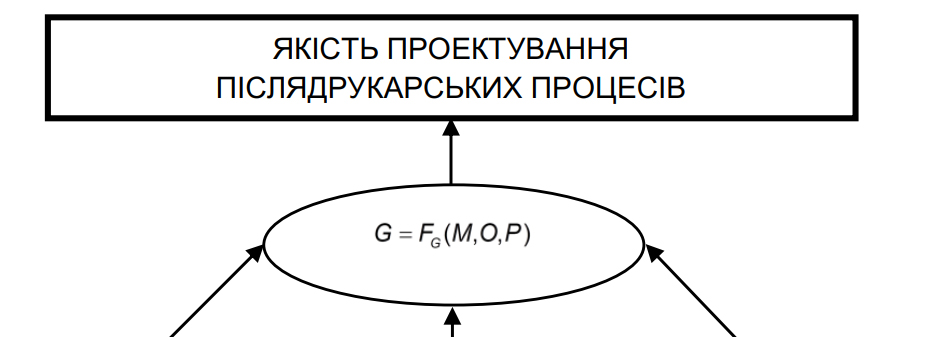THE QUALITY MODEL OF POSTPRESS PROCESSES DESIGNING
Abstract
Тhe essence of the phasification process is described. The set of linguistic variables of the process of designing the post-printing processes is distinguished: publication indicators, design features, operating conditions, type of production, materials, type of equipment, technological and economic calculations, scheme of technological process. Partial quality indicators of linguistic variables have been formed: quality of publication formation, quality of production organization, quality of planning. The notation and linguistic nature of each variable, the universal sets of values, and the corresponding linguistic terms are given. A multilevel model of fuzzy inference is constructed: formation of an integral indicator of the quality of design of post-printing processes. The preconditions for the prognostic evaluation of the quality of the analyzed process were created by accumulating information from the lowest level of the model to the highest
References
Maik, V. Z. (2011). Technology of stitching and binding processes. Lviv: UAD. (in Ukrainian).
Karpenko, V. S., & Sisyuk, V. G. (1999). Printing and bookbinding production: design and calculation of technological processes. Lviv: UAD. (in Ukrainian).
Velichko, O. M., Skiba, V. M., & Shangin, A. V. (2014). Designing of technological processes of publishing and printing production. Kyiv: NTUU KPI.(in Ukrainian).
Senkivskyy, V. M., & Kudriashova, A. V. (2019). Formalized presentation of relations between factors of postpress processes design. Printing and Publishing, 1(77), 70–77. doi: 10.32403/0554-4866-2019-1-77-70-77 (in Ukrainian).
Kudriashova, A. V. (2019). Synthesis of model of priority influence of factors for postpress processes design. Scientific Papers, 1(58), 48–54. doi: 10.32403/1998- 6912-2019-1-58-48-54 (in Ukrainian).
Pashulia, P. L. (2011). Standardization, metrology, conformity, quality in polygraphy. Lviv: UAD. (in Ukrainian).
Zade, L. A. (1976). The concept of a linguistic variable and its application to making approximate decisions. Moscow: The World. (in Russian).
Zade, L. A. (2001). The role of soft computing and fuzzy logic in the understanding, design and development of information intelligent systems. Artificial Intelligence News, 23, 7–11. (in Russian).
Syavavko, M. S. (2007). Information system "Fuzzy expert". Lviv: Ivan Franko Publishing House. (in Ukrainian).
Pikh, I. V., Senkivskyy, V. M., Senkivska, N. E., & Kalyniy, I. V. (2017). Theoretical bases of quality assurance of publishing and printing processes (part 4. prediction and quality assurance by means of fuzzy logic). Scientific Papers, 1(54), 22–30. Retrieved from http://nz.uad.lviv.ua/static/media/1-54/3.pdf (in Ukrainian).
Rotshtein, A. P. (1999). Intelligent identification technologists: fuzzy sets, neural networks, genetic algorithms. Vinnytsia: UNIVERSUM-Vinnytsia. (in Russian)




